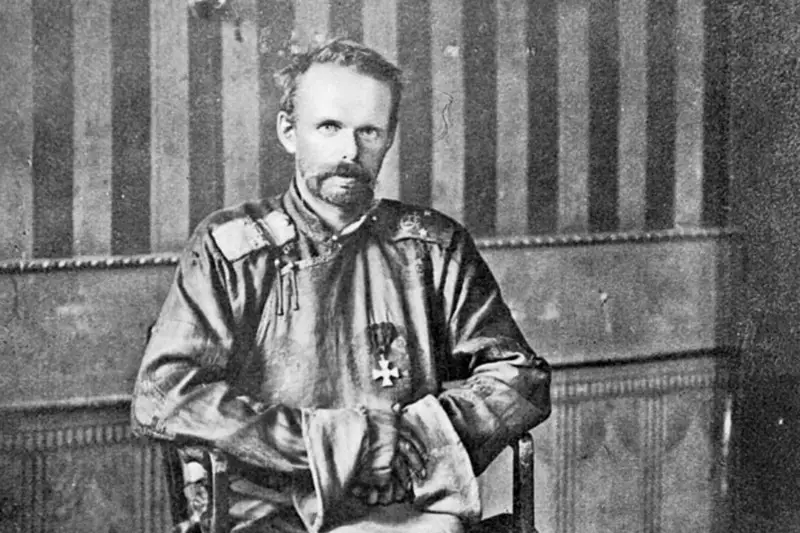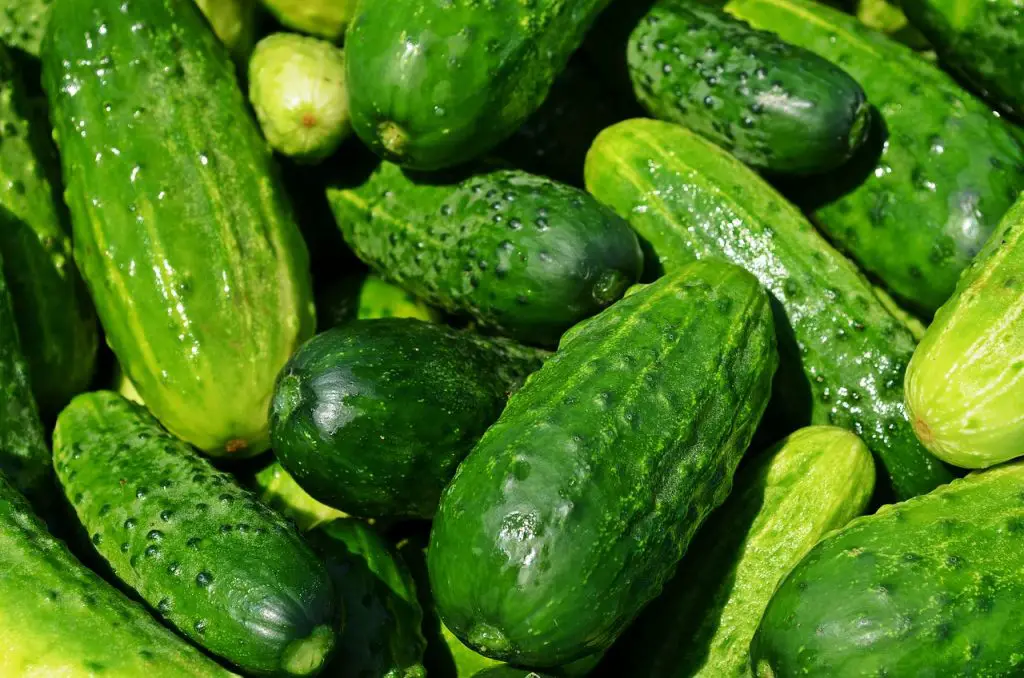 enghis Khan is perhaps one of the most significant historical figures of all time. Turning a small band of steppe tribes into the largest empire history has ever seen is no small feat, a feat many would try to replicate after his death in 1227. Although his extensive empire shortly collapsed due to the infighting between his sons, the memory of the horde lives on through history. Many would go on to idolize Genghis Khan as the ideal for a leader, and as such many would go on to base how they ruled on how Genghis Khan had ruled. Even so, none went as far as Russian general Roman von Ungern-Sternberg, who became as close as a reincarnation of Genghis Khan as possible.
enghis Khan is perhaps one of the most significant historical figures of all time. Turning a small band of steppe tribes into the largest empire history has ever seen is no small feat, a feat many would try to replicate after his death in 1227. Although his extensive empire shortly collapsed due to the infighting between his sons, the memory of the horde lives on through history. Many would go on to idolize Genghis Khan as the ideal for a leader, and as such many would go on to base how they ruled on how Genghis Khan had ruled. Even so, none went as far as Russian general Roman von Ungern-Sternberg, who became as close as a reincarnation of Genghis Khan as possible.
The Russian Empire
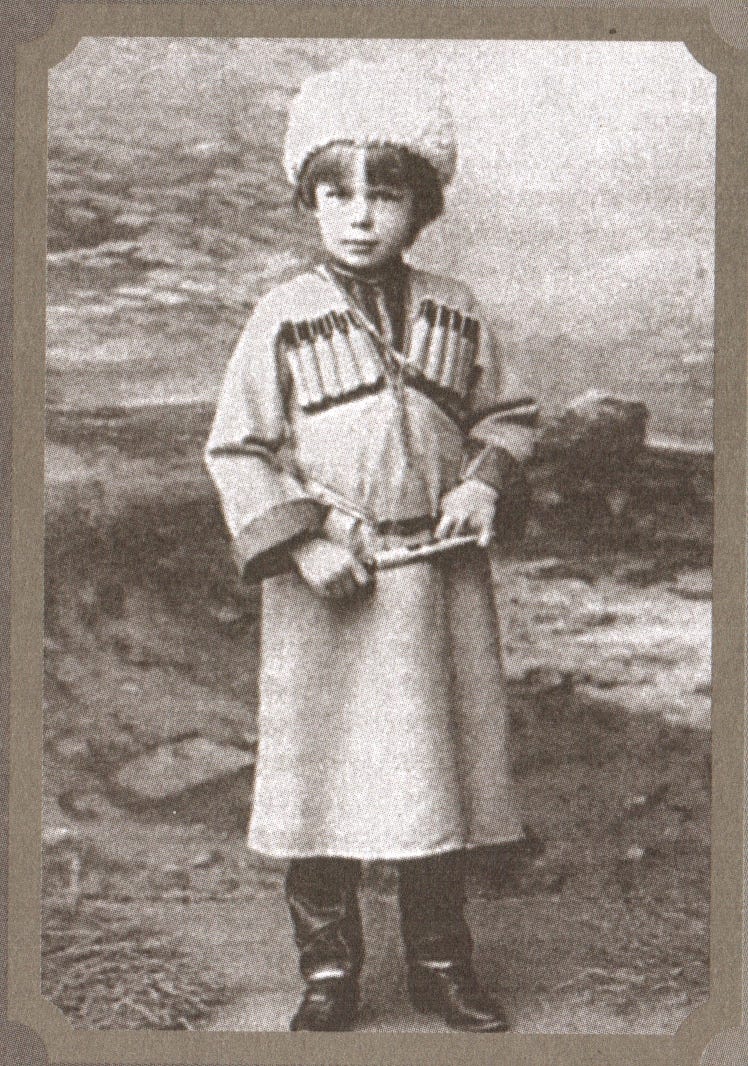
Роман Фёдорович фон Унгерн-Штернберг (Anglicised: Roman Fyodorovich von Ungern-Sternberg) was born under the Austro-Hungarian Empire on the 10 January 1886 to a family of Baltic-German nobles. His father, Theodor Leonhard Rudolph Freiherr von Ungern-Sternberg, had Hungarian roots, which he claimed went as far as Batu Khan, Genghis Khan’s grandson, something that would become important later on.
The family moved to the capital of the Governorate of Estonia, Ravel (Modern day Tallinn), in 1888 after which shortly his parents divorced in 1891. Roman would remain with his mother living his childhood in the Estonian town of Jerwakant (Modern day Järvakandi) after his mother married a Baltic German nobleman Oskar Anselm Hermann Freiherr von Hoyningen-Huene.
Roman had a troubled childhood. He displayed the obvious characteristics of a sadist leading to many of his fellow classmates fearing him. It was noted that young Roman took particular pleasure in torturing wildlife even going as far as killing his cousin’s pet owl without provocation.
He would show disgust towards the “working class” distinguishing himself from the ‘average joe’ through his aristocratic roots claiming that his family has “never taken orders from the working classes.”
His bias was further confirmed when, during the 1905 uprising in Estonia, the estate where he spent most of his childhood years on was burnt during a general anti-aristocrat revolution started by the Estonian people.
Asia
Roman developed a particular interest in the cultures of the east, more specifically those of the steppe people. After he graduated from Pavlovskoe Military School in St. Petersburg, he was placed with the 1st Argunsky and then in the 1st Amursky Cossack regiments in east Siberia, something that furthered his interest in the eastern culture. After his service with the two regiments was finished, Roman requested to be moved further east, a request which he was granted.
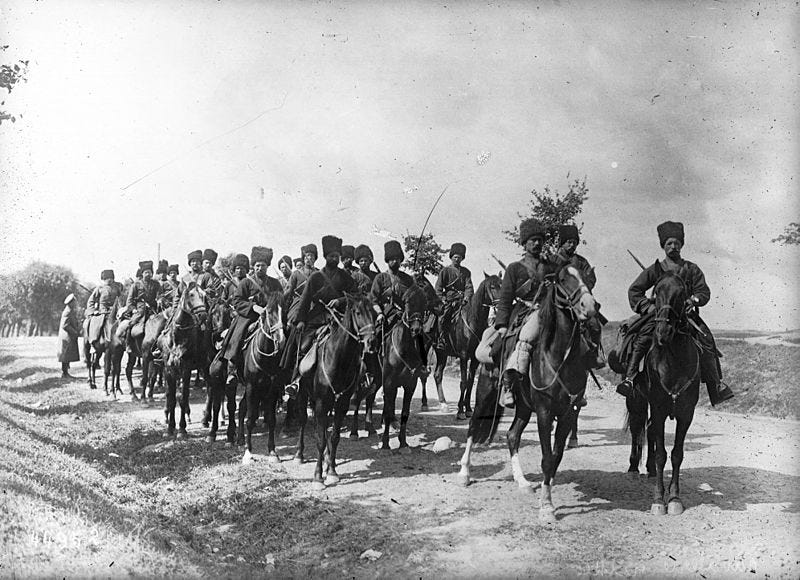
During his time in the east, Roman would go on to make quite a name for himself. Although he was a well renown alcoholic, he impressed the steppe people of the region with his horse-riding skills being able to use both a gun and a sword on horseback quite adeptly. He was also an aggressive drunkard and would get into many bar fights with his fellow comrades, which, at some point, led to him being slashed with a sword across the face, creating a distinctive scar on his cheek.
During the Outer Mongolian struggle for freedom from the Chinese in 1913, Roman went on to fight as an out-of-staff officer in the Cossack guard detachment at the Russian consulate, which would further strengthen his connection to the culture.
World War One
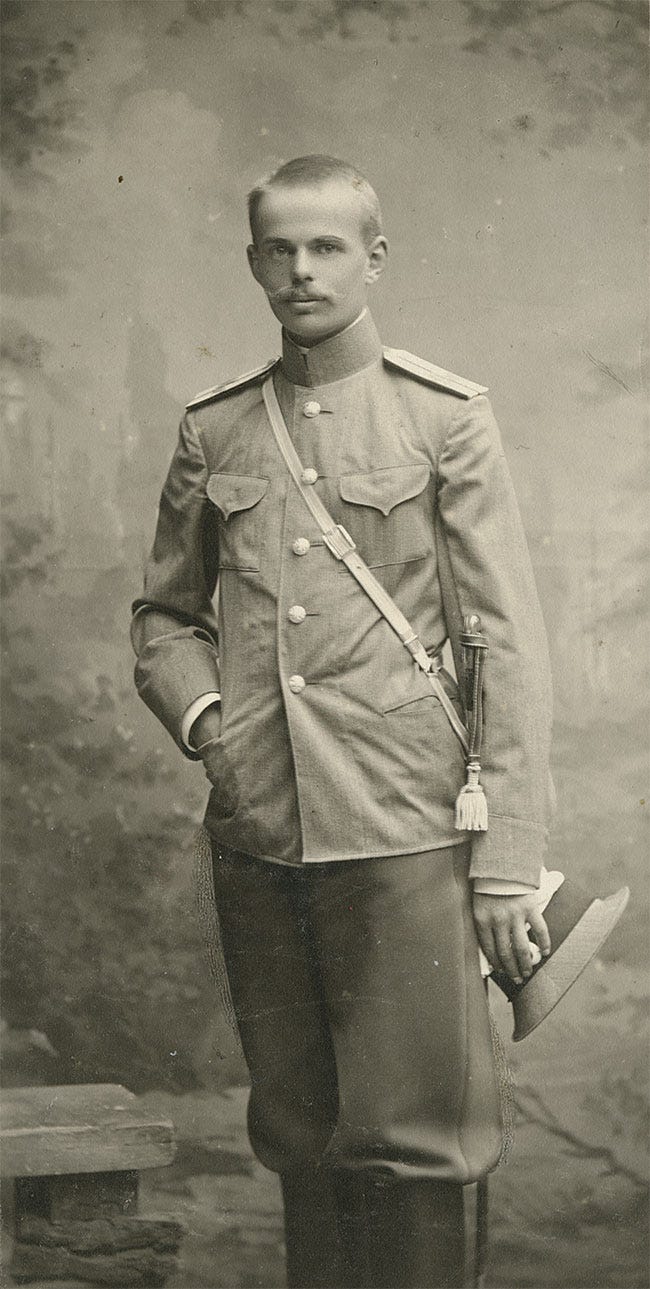
On 19 July 1914, 9 days before Russia officially joined the war, Roman joined the Russian armed forces as part of the 34th Regiment of Cossack troops stationed on the Austrian border in Galicia as an officer. From the start of the war until his court-martial in 1916, Roman went on to fight fiercely against the Austro-Hungarians and Germans during the Russian offensive.
Roman became known for his bravery and recklessness, always being the first of his troops to charge the enemy. He was most known for his charges on horseback against German machine-gun positions, something that perfectly displays the insanity of the man. This led to the young officer receiving many medals, such as the orders of St. George of the 4th grade, St. Vladimir of the 4th grade, St. Anna of the 3rd and 4th grades, and the St. Stanislas order of the 3rd grade.
His military career in the Russian forces would come to a stop due to Roman fighting another officer in a drunken rage in October 1916, leading to him receiving a court-martial and 2 months of prison time. Shortly after his release in January, the February Revolution was started by the people of Russia, ending the long rule of the Romanov dynasty over the Russian people. This made the monarchist Roman very angry as he believed that the Russian Tsars were appointed by God.
The October Revolution would aggravate Roman even more; thus, after the Communist takeover, he and a fellow general he met after his release from prison Cossack Capt. Grigory Semyonov declared their allegiance to the Romanovs and vowed to fight to get them back on the throne.
For the Tsar!
Roman and Grigory’s first contribution to the civil war would be quite remarkable. In late 1917 the two men backed by five cossacks peacefully disarmed a group of over 1000 pro-Communist combatants on a railway station in Manchuria on the China-Eastern Railway. The Manchuria region would serve as a base for the duo’s anti-Communist actions

The duo would make a name for themselves in the east through their anti-Communist actions, although they suffered from one large problem, lack of unity among the anti-Communist forces. The anti-Communist forces, more colloquially known as the “Whites,” had no unifying aim that they were all striving for, unlike the Communists, who sought to turn Russia red.
As a result, the fighting capability of the Whites was greatly reduced due to a lack of a unifying goal between all of the anti-Communist factions. Roman saw this disunity between the Whites and, although staunchly anti-Communist, he sought to build his own path in the east.
Bringing back the Horde
The first step on Roman’s journey to achieve his monarchist dream was his marriage to Manchurian princess Ji who took the name of Elena Pavlovna after their Orthodox wedding. Although mostly political, the marriage was a stepping stone toward Roman securing his place in the east.
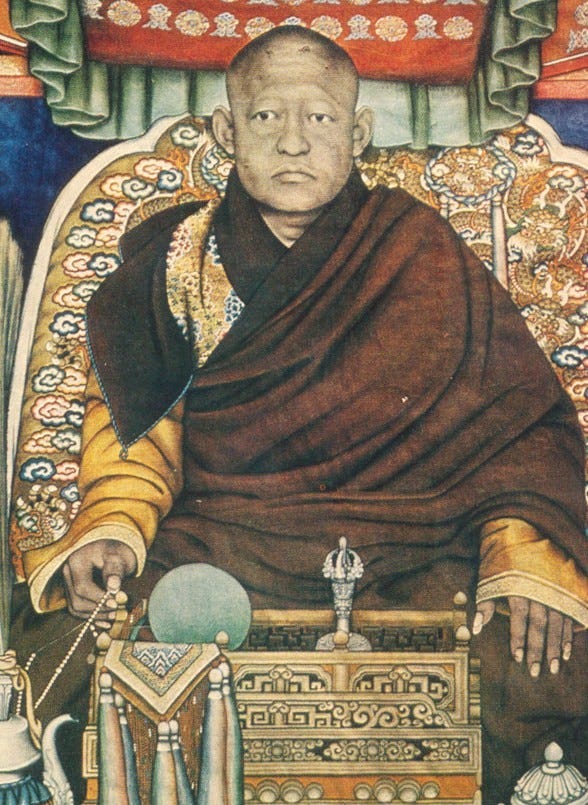
As the White forces started to lose traction in the war, Roman realized that he had to act. On 7 August 1920, he broke his allegiance to Grigory, previously his superior, and transformed his Asiatic Cavalry Division into a guerrilla force with the goal of expelling the Chinese forces in Outer Mongolia on a path to return Mongolia to its former glory. On 1 October of the same year, Roman moved towards the capital of Mongolia Urga (Modern Day Ulaanbaatar), where he requested the Chinese forces disarm and leave peacefully, a request he was denied.
His attack on the capital was disastrous, leading to very high casualties on his side. Roman was forced to retreat and regroup, getting help from Mongolian nationalists, especially the spiritual and secular leader of the Mongols, who saw him as the “God of War,” with some even speculating that the man was the reincarnation of Genghis Khan.
Roman’s forces set up a camp outside the capital where Roman would fiercely discipline his troops to make sure no one broke the line in his attack. This was crucial as Roman’s forces only numbered 1,400, whereas the Chinese defenders numbered around 7,000. Roman’s forces broke camp on 31 January 1921, and by 4 February 1921, he had captured both the Mongolian capital as well as freeing the leader of the Khagan of Mongolia, Bogd Khan.
After Roman’s feats, many of the more spiritual leaders of Mongolia started to call the man “the reincarnation of Genghis Khan,” a title which he gained through both his use of Genghis Khan’s tactics and his efficient use of the Cossacks.
He would neither confirm nor deny this title, but many historians think that, because of his father’s connection to Batu Khan, Roman took pride in this newfound title.
The Communists are coming
After his capture of Urga, Roman’s forces would enter in some skirmishes with invading Chinese forces of which he always came out victorious. After the ceremony restoring the Bogd Khan to the throne on 22 February, Roman received the title of darkhan khoshoi chin wang in the degree of khan for his efforts in restoring Mongol independence. One of the highest titles that can be received in Mongol society.
The Communists, now in control of most of Russia, sought to placate the unruly state on their border and thus started a campaign to destroy the Mongolian independence movement and integrate the country into their Socialist Union. Roman would try to fight back against the Communists clashing against them many times, but due to lack of manpower and resources, he was always outgunned, leading to Roman suffering many defeats.
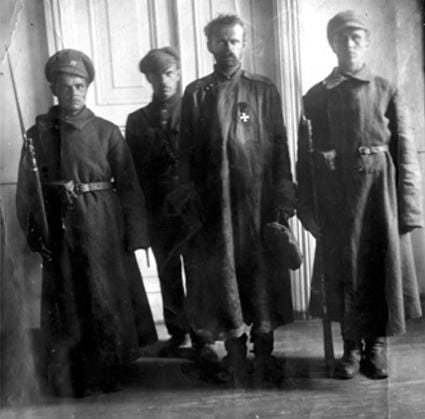
After many campaigns to raise morale and manpower and a failed plan to cross the Gobi desert in search of more troops, Roman’s troops were tired of his unfruitful campaigns and hatched a plot to kill him and his right-hand man Rezukhin. Although Rezukhin was killed, Roman survived the assassination attempt but was captured by the Communists on 20 August 1921 after his troops deserted him.
After a show trial that lasted just over six hours, on 15 September 1921, the warlord was sentenced to execution by firing squad. He was executed on the night of that day.
As soon as news of Roman’s death reached Bogd Khan, he ordered for services to be held in temples across Mongolia in remembrance of the Austro-Hungarian nobleman who became perhaps one of the greatest cavalry generals of the 20th century.

Student of Philosophy, Politics and Economics. History fanatic. Contact: aneculaeseicg@gmail.com

